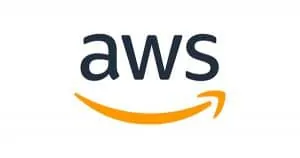
Day 1
Module 1: What Is a Cloud Migration?
- Drivers and outcomes of a cloud migration
- Planning for a successful cloud migration
- The three-phase migration process
Module 2: Assessing Migration Readiness
- The assess phase
- Cloud readiness assessment tools
- Examine your IT landscape and build your business case
- Group Exercise: The Cloud Adoption Tool (CART)
Module 3: Preparing for a Migration and Understanding Related Workstreams
- Mobilize phase
- Migration-related workstreams
Module 4: Discovering Landing Zones and Their Benefits
- What is a landing zone?
- Custom multi-account structure with AWS Organizations
- AWS Control Tower
- Customizations for AWS Control Tower (CfCt)
- Planning for connectivity
Module 5: Building a Landing Zone
- Planning a landing zone
- Design a multi-account structure
- Governance polices
- Planning for connectivity
- Demonstration: AWS Control Tower
- Hands-On Lab: Connecting Your On-Premises Network and Directory Services to AWS
Module 6: Discovering the Portfolio and Understanding Migration Strategies
- Detailed portfolio discovery workstream
- Evaluating cloud readiness
- Cloud migration strategies
- Group Exercise: Choose a migration strategy (scenario-based)
Day 2
Module 7: Understanding and Choosing Portfolio Discovery Tools
- Migration Evaluator
- AWS Migration Hub and AWS Application Discovery Service
- AWS Systems Manager and Amazon CloudWatch
- Hands-On Lab: Gathering Application Data Necessary for Migration
Module 8: Planning and Designing a Migration
- Plan the migration overall
- Building the migration factory
- Design the migration for each application
- Group Exercise: Build a migration plan
- Group Exercise: Design for migration
Module 9: Performing the Migration to AWS
- Server migration process
- Server migration tools
- VMware Cloud on AWS
- AWS Migration Hub
- AWS Application Migration Service (AWS MGN)
- Evaluating server migration tools
- Hands-On Lab: Migrating an Application to AWS
Module 10: Understanding Database and Data Migration Services
- Data migration
- Online data migration services
- Offline data migration services
- Database migration
- Hands-On Lab: Migrating an Existing Database to Amazon Aurora
Day 3
Module 11: Understanding Additional Migration Support Options
- AWS Managed Services
- AWS Service Catalog
- AWS Service Catalog integrations
- Microsoft workloads on AWS
- SAP on AWS
Module 12: Integrating, Validating, and Cutting Over Applications
- Migrate and modernize phase
- Cutover strategy
Module 13: Modernizing and Optimizing Applications
- Cost optimization
- Performance optimization
- AWS tools used to optimize
- Modernize the enterprise
- Use containers
- Use serverless architectures
- Hands-On Lab: Optimizing an Application with Amazon S3 and Amazon ECS
Module 14: Understanding Operations Tools, Integration Testing, and Automation
- AWS Config
- Infrastructure and operations as code
- Adopting a DevOps approach
- Automate change and configuration
- Automate management
Module 15: Migration Best Practices
- Course review
- Best practices
- Continue your learning
- Hands-On Lab: Automating Application Deployments
This course is intended for:
- Solutions architects
- Software engineers
- IT project managers
- Operation leads
- Other individuals involved in the planning and running of migration projects
We recommend that attendees of this course have:
- Familiarity with enterprise IT infrastructure (hardware and software)
- Completed the AWS Technical Essentials or Architecting on AWS classroom training
- Achieved their AWS Certified Solutions Architect – Associate certification (optional)
In this course, you will learn to:
- Recognize the common business and technical drivers for migrating to the cloud
- Summarize the three phases of a migration and associated objectives, tasks, and stakeholders for each
- Describe AWS architecture, tools, and migration best practices
- Distinguish between the various cloud migration strategies and when each is most appropriate
- Determine an organization’s application migration readiness
- Discover a portfolio and gather data necessary for migration
- Plan and design an application migration strategy
- Perform and validate application migration to the cloud
- Optimize applications and operations after migrating to the cloud
